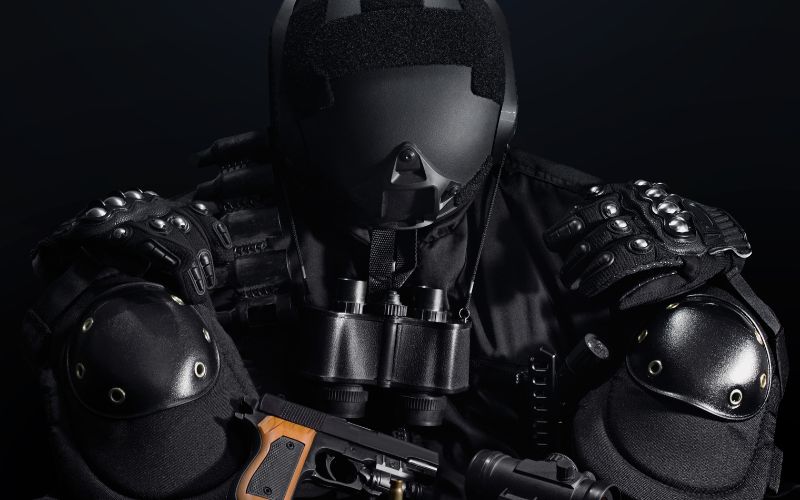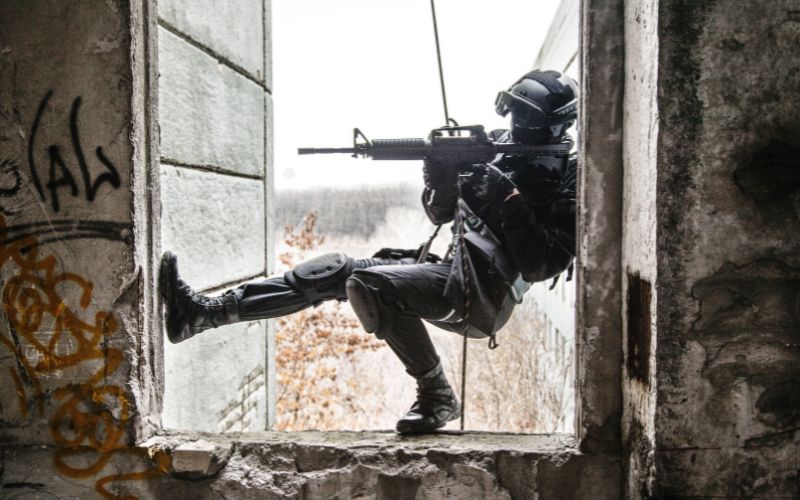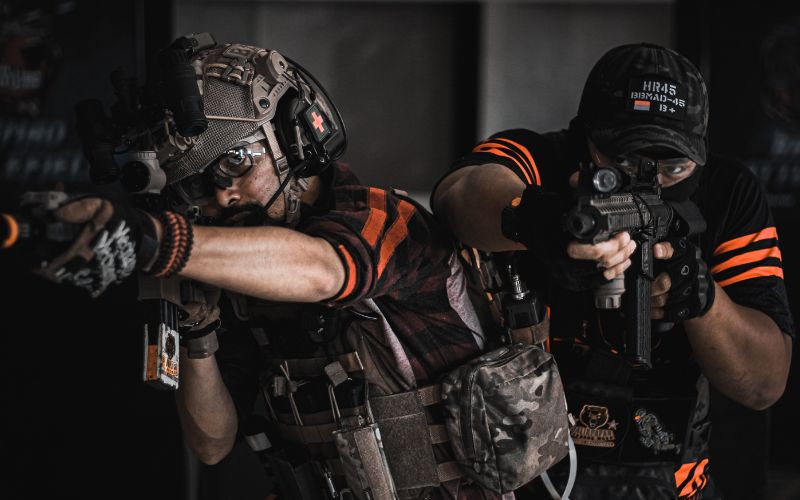The Impact Of New Legislation On the Tactical Gear Market

You might be wondering how new legislation is reshaping the tactical gear market. With stricter safety standards and performance criteria now in place, manufacturers face the challenge of adapting their designs, materials, and production processes. Compliance isn’t just about ticking boxes; it affects every aspect, from procurement practices to quality control measures. This wave of regulatory changes prompts a shift towards innovation, pushing companies to enhance gear protection capabilities. But what does this mean for market costs and environmental sustainability? Let’s explore how these factors intertwine and what they all signify for the future of tactical gear.
New Legislation Impact On Tactical Gear Market
The law enforcement and military clothing market, valued at $1.68 billion in 2023, is projected to grow to $3.12 billion by 2031, with a compound annual growth rate (CAGR) of 8%. Global security threats drive the increasing demand for specialized, protective clothing for military and law enforcement personnel. These garments offer enhanced protection while allowing flexibility and mobility, ensuring safety and performance in hazardous situations.
1. Regulatory Changes
With new legislation mandating stricter safety standards, you must ensure that your tactical gear meets specific durability and performance criteria. This shift in law directly impacts the market, particularly the military clothing market share. As a manufacturer, it’s essential to understand how these regulations are enforced and how they influence your production processes.
The legislation requires that tactical gear used by law enforcement and military personnel not only provides maximum protection but also withstands rigorous conditions. Your production processes will need significant adjustments to meet these performance criteria. The market’s demand for compliant gear may also drive the need for innovative materials and advanced technologies in your production lines.
Furthermore, these regulatory changes are likely to increase your production costs. Consequently, you’ll need to reconsider pricing strategies to maintain profitability while staying competitive.
2. Design And Material Impact
The new legislation impacts regulatory compliance and greatly influences tactical gear’s design and material choices. If you’re involved in the manufacturing or purchasing of military clothing, these changes are essential. With the mandate to use flame-retardant materials, you’re now looking at safer and more resilient gear in high-risk environments.
Design regulations now require tactical gear to incorporate ergonomic features and customizable options. This means gear will be functional and tailored for better fit and comfort. Thanks to the legislation, advanced materials like aramid fibers and ballistic nylon are becoming standard, offering enhanced durability and protection.
Here are some key aspects influenced by the new legislation:
- Flame-retardant materials: Ensures higher safety standards in tactical gear.
- Ergonomic features: Gear designed for better comfort and usability.
- Customizable options: Allows for personalized fit and function.
- Advanced materials: Adoption of aramid fibers and ballistic nylon for durability.
- Innovative gear: Development of new, improved gear with these advanced requirements.
3. Procurement Process Adjustments

The new legislation demands adjustments to your procurement processes to comply with updated standards and certifications for tactical gear. Law enforcement agencies and military organizations worldwide must now navigate new compliance measures, including the NIJ (National Institute of Justice) compliant standard, which affects how tactical gear is selected, purchased, and distributed.
This means revisiting your procurement policies to ensure they align with the latest legislative requirements. With these changes, your procurement processes must emphasize transparency and accountability more than ever. New global standards and certifications, including NIJ-compliant standards, are being introduced, pushing for higher levels of compliance.
4. Safety Standards Compliance
Guaranteeing compliance with stricter safety standards means prioritizing quality control and rigorous product testing for your tactical tools. The recent legislation’s impact dictates that meeting these new industry regulations isn’t just about ticking boxes; it’s about delivering reliable, high-performance equipment. To stay competitive and credible, you must validate that your products meet the specific safety criteria outlined in the legislation.
Here’s what you should focus on:
- Quality Control: Implement thorough checks at every production stage to catch defects early.
- Product Testing: Conduct rigorous tests to validate your tactical gear’s durability, reliability, and safety.
- Compliance: Stay updated on industry regulations to validate that your products meet the latest standards.
- Certifications and Approvals: Aim to secure necessary certifications that confirm compliance and enhance market trust.
- Innovation: Invest in new materials and designs to improve the protective capabilities of your gear.
5. Environmental Sustainability

The new legislation pushes companies to innovate with eco-friendly materials, reducing their carbon footprint. By adhering to ethical manufacturing practices, businesses can produce high-performance military equipment that meets strict environmental standards. This shift benefits the planet and drives the industry toward more sustainable solutions.
- Recycled Plastics: Transforming waste into high-quality tactical gear.
- Organic Cotton: Offering a natural, sustainable alternative to conventional fibers.
- Biodegradable Materials: Ensuring that gear decomposes without harming the environment.
- Sustainable Production: Reducing the carbon footprint during manufacturing processes.
- Consumer Demand: Aligning products with the values of environmentally conscious buyers.
Reducing Carbon Footprint
New legislation pushes the tactical gear market to adopt more sustainable practices to reduce its carbon footprint. By promoting eco-friendly materials, manufacturers must now adhere to stricter environmental standards. This shift has led to innovative fabrics designed specifically for tactical gear, ensuring performance and sustainability.
Ethical Manufacturing Practices
Embracing ethical manufacturing practices in the tactical gear market is essential for reducing environmental impact and promoting sustainability. By focusing on environmentally friendly production methods, you can help minimize the negative effects on our planet. Companies increasingly use eco-friendly materials and processes to align with new legislation and meet global sustainability goals.
6. Ethical Sourcing
Understanding ethical sourcing in the tactical gear market, especially for products like OD green-colored gear, ensures suppliers follow fair labor practices and environmental regulations. Committing to transparency in your supply chain demonstrates social responsibility and promotes sustainable production, enhancing brand reputation and appealing to socially conscious consumers. New legislation now requires companies to disclose these practices, emphasizing the importance of responsible sourcing in today’s marketplace.
Regular audits of your suppliers are necessary to verify compliance with fair labor practices, worker safety, and environmental regulations to meet these standards. This process ensures that producing OD green tactical gear and other products minimizes the ecological impact. By embracing sustainable practices, you improve working conditions and foster a positive brand image that resonates with today’s informed consumers who prioritize ethical and sustainable choices.
7. Market Cost Implications

Pricing trends will shift significantly as manufacturers adapt to new legislation. Compliance costs and necessary supply chain adjustments will inevitably lead to higher product prices. Understanding how these factors affect the market can help you stay competitive and maintain profit margins.
Pricing Shifts And Trends
Frequently, new legislation leads to increased production costs for tactical gear manufacturers, which can substantially impact market pricing and consumer behavior. When manufacturers face higher production costs, they often pass these costs onto you, the consumer. As a result, you might notice changes in pricing trends and shifts in market dynamics.
For law enforcement agencies and other consumers of tactical gear, here’s how these pricing shifts and trends might affect you:
- Increased Prices: Expect to pay more for tactical gear as manufacturers adjust pricing to cover higher production costs.
- Consumer Behavior: Higher prices might make you reconsider your purchasing decisions, opting for less expensive alternatives.
- Brand Loyalty: If prices increase significantly, you might be less loyal to brands, leading you to explore other options.
- Compliance Costs: Manufacturers must invest in research and development to meet new legislative requirements, further affecting prices.
- Market Trends: Monitor market trends as pricing strategies may evolve to maintain profitability while ensuring compliance.
Understanding these implications can help you navigate the market more effectively, whether purchasing for professional use or personal interest.
Conclusion
You’ve seen how new legislation reshapes the tactical gear market by enforcing stricter safety standards and demanding innovative changes in design and materials. These regulations require adjusting procurement practices and guaranteeing compliance with enhanced safety measures.
Embracing these changes also means focusing on environmental sustainability and ethical sourcing. While these shifts might increase costs, they ultimately drive a more competitive and safety-focused industry, benefiting you and the market as a whole.
Frequently Asked Questions
How Will Consumer Demand for Tactical Gear Shift Post-Legislation?
You’ll see shifts in consumer preferences and market trends. Price changes and product availability will affect supply chains. Online shopping, brand loyalty, customer reviews, marketing strategies, and seasonal demand will all play pivotal roles in shaping demand.
Are There Any New Training Requirements for Using Updated Tactical Gear?
Yes, you’ll face new training standards and certification programs. Safety protocols and equipment handling skills are essential. Compliance checks and proficiency assessments guarantee operational readiness. Instructors must meet specific requirements, and user qualifications are more stringent.
How Will the Legislation Affect Small Businesses in the Tactical Gear Market?
You’ll face higher compliance costs and regulatory hurdles. Small businesses must adapt their pricing, inventory, and marketing strategies. Improving supplier relationships and targeting niche markets will help navigate the competitive landscape and sustain growth.
